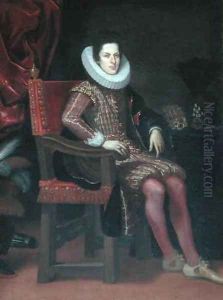Empoli Jacopo da Paintings
Jacopo da Empoli, born Jacopo Chimenti, was an eminent Italian painter of the late Renaissance and early Baroque periods, hailing from Empoli, a town in the Tuscan region, which influenced his moniker. Born in 1551 in Florence, he was deeply rooted in the rich cultural and artistic traditions of the region. Jacopo's artistic journey was significantly shaped by his training under influential Florentine artists, including Maso da San Friano, whose guidance imbued in him a strong foundation in the technical and stylistic aspects of painting prevalent during the time.
Empoli's body of work is notable for its exquisite detail, vibrant color palette, and the delicate handling of light, characteristics that were highly appreciated in the Counter-Reformation era, during which religious institutions were prime patrons of the arts, seeking artworks that communicated religious narratives with emotional depth and visual appeal. Jacopo's contributions were primarily in the realm of religious and historical paintings, with his works often gracing the walls and altars of churches and public buildings in Florence and its surroundings. His style, while rooted in the Mannerist tradition, evolved over time, showing an increasing inclination towards the naturalism that would come to define the Baroque period. This shift is evident in his later works, which display a more realistic representation of figures and space.
Despite his considerable contributions to the Italian art scene, Jacopo da Empoli's name is not as widely recognized as some of his contemporaries, such as Caravaggio or Bernini, who were instrumental in defining the Baroque aesthetic. Nonetheless, his work remains an important link in the evolution of Italian art, bridging the gap between the High Renaissance's idealism and the Baroque's emotional depth and realism. Jacopo da Empoli passed away in 1640 in Florence, leaving behind a legacy that, while perhaps underappreciated in the broader narrative of art history, is deeply valued among scholars and enthusiasts of Italian art for its beauty, technical skill, and historical significance.
